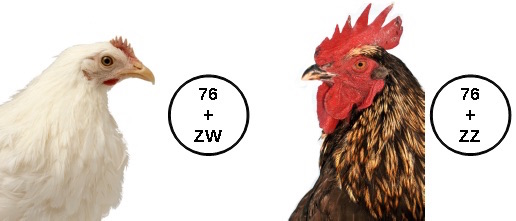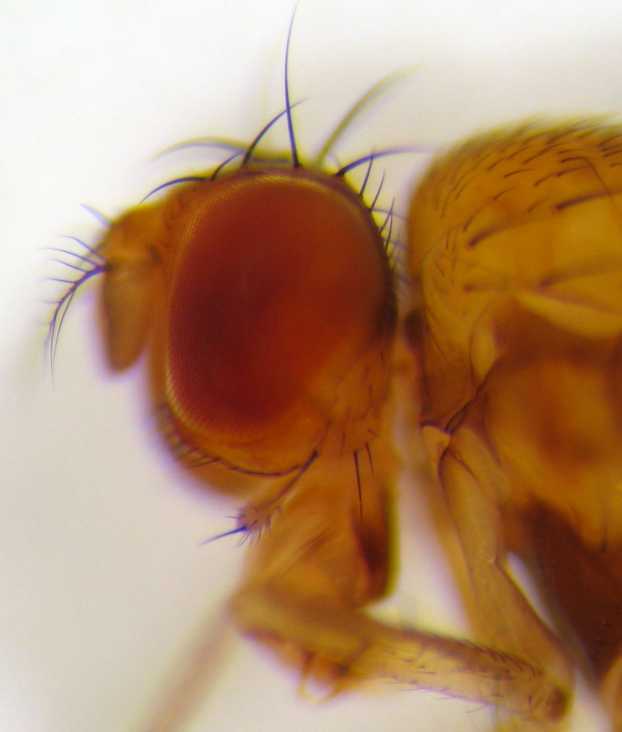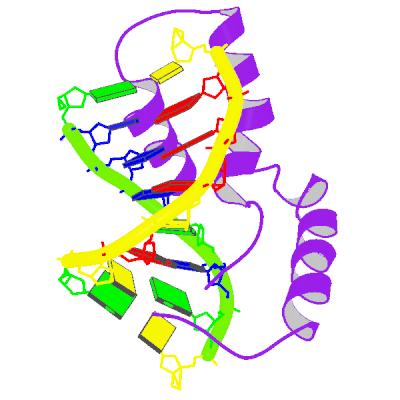|
Heterogametic
The XY sex-determination system is a sex-determination system present in many mammals (including humans), some insects (''Drosophila''), some snakes, some fish ( guppies), and some plants (''Ginkgo'' tree). In this system, the sex of an individual usually is determined by a pair of sex chromosomes. Typically, females have two of the same kind of sex chromosome (XX), and are called the homogametic sex. Males typically have two different kinds of sex chromosomes (XY), and are called the heterogametic sex. In humans, the presence of the Y chromosome is responsible for triggering male development; in the absence of the Y chromosome, the fetus will undergo female development. In most species with XY sex determination, an organism must have at least one X chromosome in order to survive. The XY system contrasts in several ways with the ZW sex-determination system found in birds, some insects, many reptiles, and various other animals, in which the heterogametic sex is female. A temp ... [...More Info...] [...Related Items...] OR: [Wikipedia] [Google] [Baidu] |
ZW Sex-determination System
The ZW sex-determination system is a chromosomal system that determines the sex of offspring in birds, some fish and crustaceans such as the giant river prawn, some insects (including butterflies and moths), the schistosome family of flatworms, and some reptiles, e.g. majority of snakes, lacertid lizards and monitors, including Komodo dragons. It is also present in some plants, where it has evolved independently on many occasions, characterizing at least 22% of plants with documented sex chromosomes. The letters Z and W are used to distinguish this system from the XY sex-determination system. In the ZW system, females have a pair of dissimilar ZW chromosomes, and males have two similar ZZ chromosomes. In contrast to the XY sex-determination system and the X0 sex-determination system, where the sperm determines the sex, in the ZW system, the ovum determines the sex of the offspring. Males are the homogametic sex (ZZ), while females are the heterogametic sex (ZW). The Z ... [...More Info...] [...Related Items...] OR: [Wikipedia] [Google] [Baidu] |
Birds
Birds are a group of warm-blooded vertebrates constituting the class (biology), class Aves (), characterised by feathers, toothless beaked jaws, the Oviparity, laying of Eggshell, hard-shelled eggs, a high Metabolism, metabolic rate, a four-chambered heart, and a strong yet lightweight Bird skeleton, skeleton. Birds live worldwide and range in size from the bee hummingbird to the common ostrich. There are over 11,000 living species and they are split into 44 Order (biology), orders. More than half are passerine or "perching" birds. Birds have Bird wing, wings whose development varies according to species; the only known groups without wings are the extinct moa and elephant birds. Wings, which are modified forelimbs, gave birds the ability to fly, although further evolution has led to the Flightless bird, loss of flight in some birds, including ratites, penguins, and diverse endemism, endemic island species. The digestive and respiratory systems of birds are also uniquely a ... [...More Info...] [...Related Items...] OR: [Wikipedia] [Google] [Baidu] |
Temperature-dependent Sex Determination
Temperature-dependent sex determination (TSD) is a type of environmental sex determination in which the temperatures experienced during embryonic/larval development determine the sex of the offspring. It is observed in reptiles and teleost fish, with some reports of it occurring in species of shrimp. TSD differs from the chromosomal sex-determination systems common among vertebrates. It is the most studied type of environmental sex determination (ESD). Some other conditions, e.g. density, pH, and environmental background color, are also observed to alter sex ratio, which could be classified either as temperature-dependent sex determination or temperature-dependent sex differentiation, depending on the involved mechanisms. As sex-determining mechanisms, TSD and genetic sex determination (GSD) should be considered in an equivalent manner, which can lead to reconsidering the status of fish species that are claimed to have TSD when submitted to extreme temperatures instead of the temp ... [...More Info...] [...Related Items...] OR: [Wikipedia] [Google] [Baidu] |
Drosophila XY Sex-determination
''Drosophila'' (), from Ancient Greek δρόσος (''drósos''), meaning "dew", and φίλος (''phílos''), meaning "loving", is a genus of fly, belonging to the family (biology), family Drosophilidae, whose members are often called "small fruit flies" or pomace flies, vinegar flies, or wine flies, a reference to the characteristic of many species to linger around overripe or rotting fruit. They should not be confused with the Tephritidae, a related family, which are also called fruit flies (sometimes referred to as "true fruit flies"); tephritids feed primarily on unripe or ripe fruit, with many species being regarded as destructive agricultural pests, especially the Mediterranean fruit fly. One species of ''Drosophila'' in particular, ''Drosophila melanogaster'', has been heavily used in research in genetics and is a common model organism in developmental biology. The terms "fruit fly" and "''Drosophila''" are often used synonymously with ''D. melanogaster'' in modern biolo ... [...More Info...] [...Related Items...] OR: [Wikipedia] [Google] [Baidu] |
Turner Syndrome
Turner syndrome (TS), commonly known as 45,X, or 45,X0,Also written as 45,XO. is a chromosomal disorder in which cells of females have only one X chromosome instead of two, or are partially missing an X chromosome (sex chromosome monosomy) leading to the complete or partial deletion of the pseudoautosomal regions (PAR1, PAR2) in the affected X chromosome. Typically, people have two sex chromosomes (XX for females or XY for males). The chromosomal abnormality is often present in just some cells, in which case it is known as Turner syndrome with mosaicism. 45,X0 with mosaicism can occur in males or females, but Turner syndrome without mosaicism only occurs in females. Signs and symptoms vary among those affected but often include additional skin folds on the neck, arched palate, low-set ears, low hairline at the nape of the neck, short stature, and lymphedema of the hands and feet. Those affected do not normally develop menstrual periods or mammary glands without hormone trea ... [...More Info...] [...Related Items...] OR: [Wikipedia] [Google] [Baidu] |
XX Male Syndrome
XX male syndrome, also known as de la Chapelle syndrome or 46,XX testicular disorder of sex development (or 46,XX DSD) is a rare intersex condition in which an individual with a 46,XX karyotype develops a male phenotype.updated 2015 In 90 percent of these individuals, the syndrome is caused by the Y chromosome's '' SRY'' gene, which triggers male reproductive development, being atypically included in the crossing over of genetic information that takes place between the pseudoautosomal regions of the X and Y chromosomes during meiosis in the father. When the X with the ''SRY'' gene combines with a normal X from the mother during fertilization, the result is an XX genetic male. Less common are ''SRY''-negative individuals, who appear to be XX genetic females, which is caused by a mutation in an autosomal or X chromosomal gene. Masculinization in those with the condition is variable, and those with the condition are sterile. This syndrome is diagnosed and occurs in appr ... [...More Info...] [...Related Items...] OR: [Wikipedia] [Google] [Baidu] |
Klinefelter Syndrome
Klinefelter syndrome (KS), also known as 47,XXY, is a chromosome anomaly where a male has an extra X chromosome. These complications commonly include infertility and small, poorly functioning testicles (if present). These symptoms are often noticed only at puberty, although this is one of the most common chromosomal disorders. The birth prevalence of KS in the State of Victoria, Australia was estimated to be 223 per 100,000 males. It is named after American endocrinologist Harry Klinefelter, who identified the condition in the 1940s, along with his colleagues at Massachusetts General Hospital. The syndrome is defined by the presence of at least one extra X chromosome in addition to a Y chromosome, yielding a total of 47 or more chromosomes rather than the usual 46. Klinefelter syndrome occurs randomly. The extra X chromosome comes from the father and mother nearly equally. An older mother may have a slightly increased risk of a child with KS. The syndrome is diagnosed by ... [...More Info...] [...Related Items...] OR: [Wikipedia] [Google] [Baidu] |
XYY Syndrome
XYY syndrome, also known as Jacobs syndrome, is an aneuploid genetic condition in which a male has an extra Y chromosome. There are usually few symptoms. These may include being taller than average and an increased risk of learning disabilities. The person is generally otherwise normal, including typical rates of fertility. The condition is generally not inherited but rather occurs as a result of a random event during sperm development. Diagnosis is by a chromosomal analysis, but most of those affected are not diagnosed within their lifetime. There are 47 chromosomes, instead of the usual 46, giving a 47,XYY karyotype. Treatment may include speech therapy or extra help with schoolwork, and outcomes are generally positive. The condition occurs in about 1 in 1,000 male births. Many people with the condition are unaware that they have it. The condition was first described in 1961. Signs and symptoms Physical traits People with the 47,XYY karyotype have an increased growth ... [...More Info...] [...Related Items...] OR: [Wikipedia] [Google] [Baidu] |
Trisomy X
Trisomy X, also known as triple X syndrome and characterized by the karyotype 47,XXX, is a chromosome disorder in which a female has an extra copy of the X chromosome. It is relatively common and occurs in 1 in 1,000 females, but is rarely diagnosed; fewer than 10% of those with the condition know they have it. Those who have symptoms can have learning disabilities, mild dysmorphic features such as hypertelorism (wide-spaced eyes) and clinodactyly (incurved little fingers), early menopause, and increased height. As the symptoms of trisomy X are often not serious enough to prompt a karyotype test, many cases of trisomy X are diagnosed before birth via prenatal screening tests such as amniocentesis. Most females with trisomy X live normal lives, although their socioeconomic status is reduced compared to the general population. Trisomy X occurs via a process called nondisjunction, in which normal cell division is interrupted and produces gametes with too many or too few chromosomes ... [...More Info...] [...Related Items...] OR: [Wikipedia] [Google] [Baidu] |
Y Chromosome
The Y chromosome is one of two sex chromosomes in therian mammals and other organisms. Along with the X chromosome, it is part of the XY sex-determination system, in which the Y is the sex-determining chromosome because the presence of the Y chromosome causes offspring produced in sexual reproduction to be of male sex. In mammals, the Y chromosome contains the SRY gene, which triggers development of male gonads. The Y chromosome is passed only from male parents to male offspring. Overview Discovery The Y chromosome was identified as a sex-determining chromosome by Nettie Stevens at Bryn Mawr College in 1905 during a study of the mealworm ''Tenebrio molitor''. Edmund Beecher Wilson independently discovered the same mechanisms the same year, working with Hemiptera. Stevens proposed that chromosomes always existed in pairs and that the smaller chromosome (now labelled "Y") was the pair of the X chromosome discovered in 1890 by Hermann Henking. She realized that th ... [...More Info...] [...Related Items...] OR: [Wikipedia] [Google] [Baidu] |
Alfred Jost
Alfred Jost (1916–1991) was a French endocrinologist, and an early researcher in the field of fetal endocrinology. He is known for his discovery of the Müllerian inhibitor, now called anti-Müllerian hormone (AMH) or Müllerian inhibiting substance (MIS). His research demonstrated how hormones affect the development of male and female sex characteristics. Career Jost was a professor at the University of Paris, and was head of the Department of Comparative Physiology there in 1972. Jost was known for applying surgical methods to fetal endocrinology. He also taught many pre-doctoral students. Research During the 1950s and 1960s Jost studied the mechanism of somatic sex differentiation; his research showed that male characteristics must be imposed on the fetus by the testicular hormones testosterone and AMH, and that in the absence or inactivity of these hormones, the fetus becomes phenotypically female.However, this has been discredited by recent studies. Jost also stud ... [...More Info...] [...Related Items...] OR: [Wikipedia] [Google] [Baidu] |
Testosterone
Testosterone is the primary male sex hormone and androgen in Male, males. In humans, testosterone plays a key role in the development of Male reproductive system, male reproductive tissues such as testicles and prostate, as well as promoting secondary sexual characteristics such as increased muscle and bone mass, and the growth of androgenic hair, body hair. It is associated with increased aggression, sex drive, Dominance hierarchy, dominance, courtship display, and a wide range of behavioral characteristics. In addition, testosterone in both sexes is involved in health and well-being, where it has a significant effect on overall mood, cognition, social and sexual behavior, metabolism and energy output, the cardiovascular system, and in the prevention of osteoporosis. Insufficient levels of testosterone in men may lead to abnormalities including frailty, accumulation of adipose fat tissue within the body, anxiety and depression, sexual performance issues, and bone loss. Excessiv ... [...More Info...] [...Related Items...] OR: [Wikipedia] [Google] [Baidu] |






